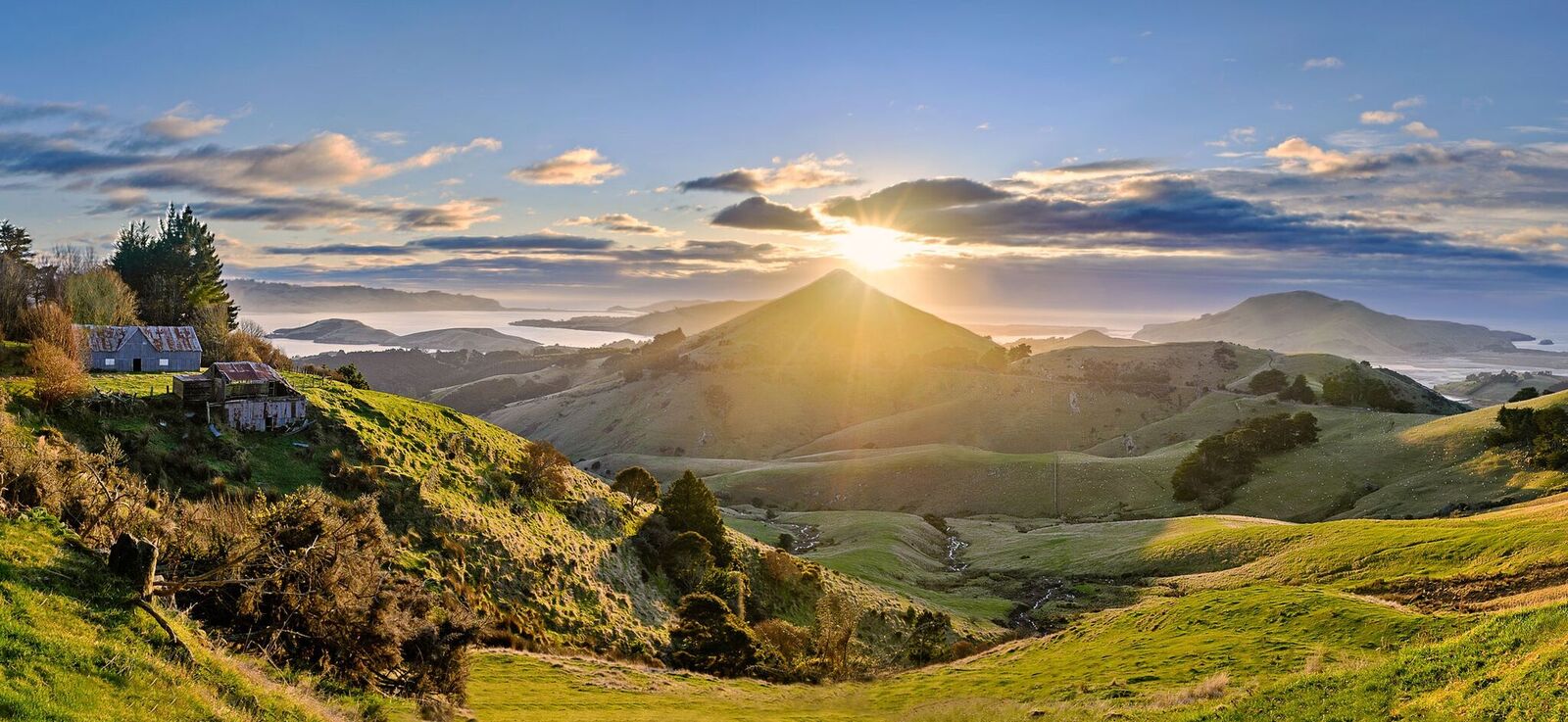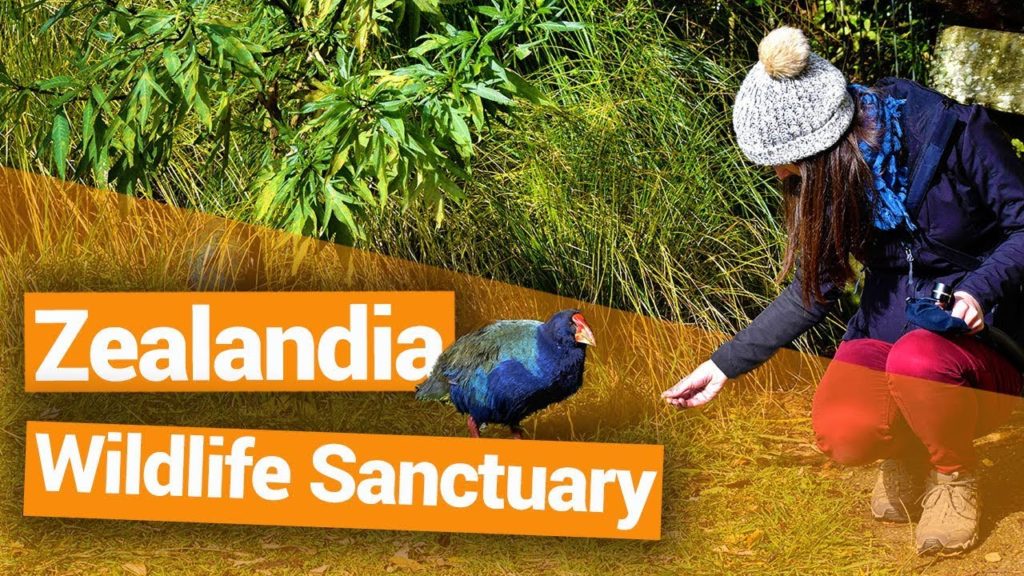
New Zealand’s Audacious Effort to Save Its Unique Wildlife
Naomi Arnold / The Washington Post
(January 1, 2021) — If you wanted to design the perfect predator, the stoat would be hard to beat. Ali King calls it the shark of the New Zealand bush, and it’s a fitting description. Stoats were introduced here in the late 1800s to help control the imported rabbits that were overrunning sheep pastures. Instead, they quickly became indiscriminate serial killers.
“Always searching, always killing. They never rest,” King says as he walks up a beach in the fractured southwest tip of the country. An energetic jack-of-all-trades, King has pursued the small, sinuous creatures since co-founding a conservation organization in 2004, and today he is carrying a wooden box trap as well as rabbit meat and a hen’s egg to use as bait — weapons to help restore the seabirds and other diverse species that once filled canopy and forest.
The effort is part of an audacious project across New Zealand to get rid of nonnative pests that have decimated much of its unique fauna. Few nations have ever waged a battle like this on such a major scale, and the “Predator Free 2050” plan could offer global lessons in how to utilize scientific advances as well as how to win hearts and minds for the cause.
After four years, more than 5,000 groups and tribes — Maori iwi — have registered to do predator control in their communities, and 117 islands have been declared free not just of the weasel-like stoats but of possums, rats and mice. But progress on the mainland will come much harder.
“It’s fair to say that most people would regard the project as incredibly ambitious, to try and remove that many species at that scale,” noted Euan Ritchie, an associate professor in wildlife ecology and conservation at Deakin University in Australia. “But I think if anyone can achieve it, it’s probably the New Zealanders.”
Even if the project doesn’t achieve its ultimate goal, he anticipates benefits such as investment in new technologies. “We’re going to learn so much about in what ways we should be managing invasive species better.”

New Zealand aims to rid itself of invasive predators by 2050. Success here could lead the way for other countries.
The government’s Department of Conservation leads the multimillion-dollar effort in partnership with community groups and nonprofits such as King’s South West New Zealand Endangered Species Charitable Trust, which focuses on remote, uninhabited Coal Island.
The latest expedition saw him and a small group of volunteers sailing along the country’s southwest coast into Fiordland National Park, a UNESCO World Heritage site. They spent a week lugging traps and bait onto the beaches and into the bush on Coal, several other islands and the mainland, because stoats can easily swim the blue expanses of channel.
King still has a stoat in the boat’s freezer from an earlier trip, and on one bright, clear morning, he pulls back the flesh on her muzzle to show four long, sharp teeth. She wasn’t pregnant, unlike most females, which are typically just a few days old when fathers or siblings impregnate them.
“They’re a ticking time bomb the day they’re born,” King says.
“It’s like the living dead, isn’t it?” a volunteer says. “There are just hordes coming towards you.”
At night on the cliffs of Coal Island — or Te Puka-Hereka in Maori, which translates as “The Tied Anchor” — three sets of solar-powered speakers broadcast the cacophonous calls of burrow-nesting sooty shearwaters and mottled petrels. The seabirds have been absent for more than a century. The trust wants to bring them back as a step toward reviving the biodiversity that once flourished throughout New Zealand.

Creating a safe harbor on offshore islands can be daunting logistically, but Coal is particularly challenging because it is so isolated. This trip, like others the trust coordinates several times a year, depends on a Department of Conservation research vessel called Southern Winds. It leaves from the seaport of Bluff on the mainland’s southern coast, navigates the rolling Pacific for six hours and finally pulls into Preservation Inlet, where maritime radio is the only way to communicate with civilization.
In 2008, the 4.5-square-mile island became the world’s first larger island to have mice eradicated, after helicopters strafed the terrain with poisoned cereal bait. The mice have not returned, and pilot Peter Garden has gone on to help eliminate rodents on other vulnerable islands, including Seychelles and the Aleutian Islands.
An aggressive deer culling also ended well on Coal; although amorous stags sometimes swim ashore, they leave when they don’t find any females. Yet stoats have made three comebacks in the past decade, including in 2019 during one of the biggest drops of beech seeds and rimu fruit in 40 years.
When the trees reproduce so heavily, the feasting is great for birds, but it also draws stoats. More than a dozen were caught in recent months. Autopsies showed bellies full of feathers, signaling the ongoing danger to birds such as the kakapo, a fat, flightless parrot found only in New Zealand and considered one of its “unique treasures.”
“For me, what’s really hit home is just how bad the stoats are,” said Amber Bill, director of biodiversity threats at the Department of Conservation. Until the islands can be made secure, “we can’t ever return birds like kakapo.”
Elsewhere in New Zealand, other issues loom for Predator Free 2050. Alpine areas that previously were just beyond a stoat’s range may be warming up enough through climate change to allow the mammals to survive.
Cooperation is crucial to the project’s ultimate success, Bill acknowledges. The department is working with charitable trusts, businesses, community groups and individuals, deploying lures and traps, fences, and pest tracking, detection and removal.
Some are novel approaches, such as a device that senses a predator via special pads and then sprays a toxin onto its fur, which the animal ingests as it grooms itself. But other strategies in urban parks and backyards are more mundane, with ordinary New Zealanders simply planting more trees, setting ordinary traps and recording their catches. According to the Predator Free New Zealand Trust, “having a trap in every 5th urban backyard is enough to create a safe environment for our native wildlife to flourish.”
The project represents the country’s “greatest opportunity to see a shift in conservation,” Bill said. But collaboration is “the only way we will achieve it.”

The volunteers, who each paid to come on the trip, wake every morning in their bunks on the Southern Winds, eat breakfast and get the day’s instructions. They pull on wet-weather gear, which had to clear stringent quarantine measures before departure, and clamber into inflatable dinghies. Then it’s a quick ride across the still waters of the fjords, dodging seals on the coastline and watching rogue waves carefully to time a leap for the rocks.
On Coal Island, they tramp through the dripping rainforest. They bang rebar into the ground to fully secure each trap, since even a hungry stoat will be scared off by unexpected movement.
All the while, birds mostly lost now from the mainland flit and call above them: the saddleback, with its distinctive chestnut markings and a voice like a car refusing to start; the kaka, the raucous, chatty parrot with flashy red underwings; and the kakariki, the small, bright parakeet named with the Maori word for green.
A helicopter lands one afternoon on the island’s beach with a surprise for the volunteers: two Haast tokoeka kiwis, crouching on towels in wooden boxes. They are the rarest kind of New Zealand’s nocturnal, flightless icon, listed as “nationally critical” — one level below extinct. Only 400 survive today.
“This is what we work for,” King says. “It’s not all doom and gloom and stoats.”
The group walks a short way into the bush to release the birds. At a year old, they’re big and heavy enough to fight off predators.
Dee Wainui has come for the occasion as a representative of the Kai Tahu iwi. This day is personal for her. Her father was beaten as a youth for speaking Maori at school, so she never learned it at home while growing up. Her involvement in conservation efforts on nearby Stewart Island-Rakiura and in her community of Riverton is her way of helping to reverse some of the damage wrought by colonization.
“It’s a game changer,” she says. “This is mahi [work] that I’m blessed to do. You can go back with your mokopuna [grandchildren] and say: ‘I planted that tree. Our manu[birds] are here because of that.’ ”
“What will happen if we don’t?” she asks. “We won’t have anything.”
After a Maori prayer, the kiwis are let go to scuffle into holes scraped for them under some beech trees. They’ll start exploring at dusk, joining about 40 others of their kind on the island. Even with very active management, increasing their numbers will take generations.
The Southern Winds finally weighs anchor and continues its journey. Along the way, there will be traps on other islands to check and re-bait — places where once-silent forests, where the ground and trees teemed with rats, are now coming back to life.
“It’s a passion,” King says. “Once you get hooked … you find it bloody hard to leave it.”
Posted in accordance with Title 17, Section 107, US Code, for noncommercial, educational purposes.